The Wolf Man (1941 film)
8.4 /10 1 Votes
94% Rotten Tomatoes Genre Drama, Horror Duration Language English | 7.4/10 IMDb Country United States | |||||||||||||||||||||||||||||||||
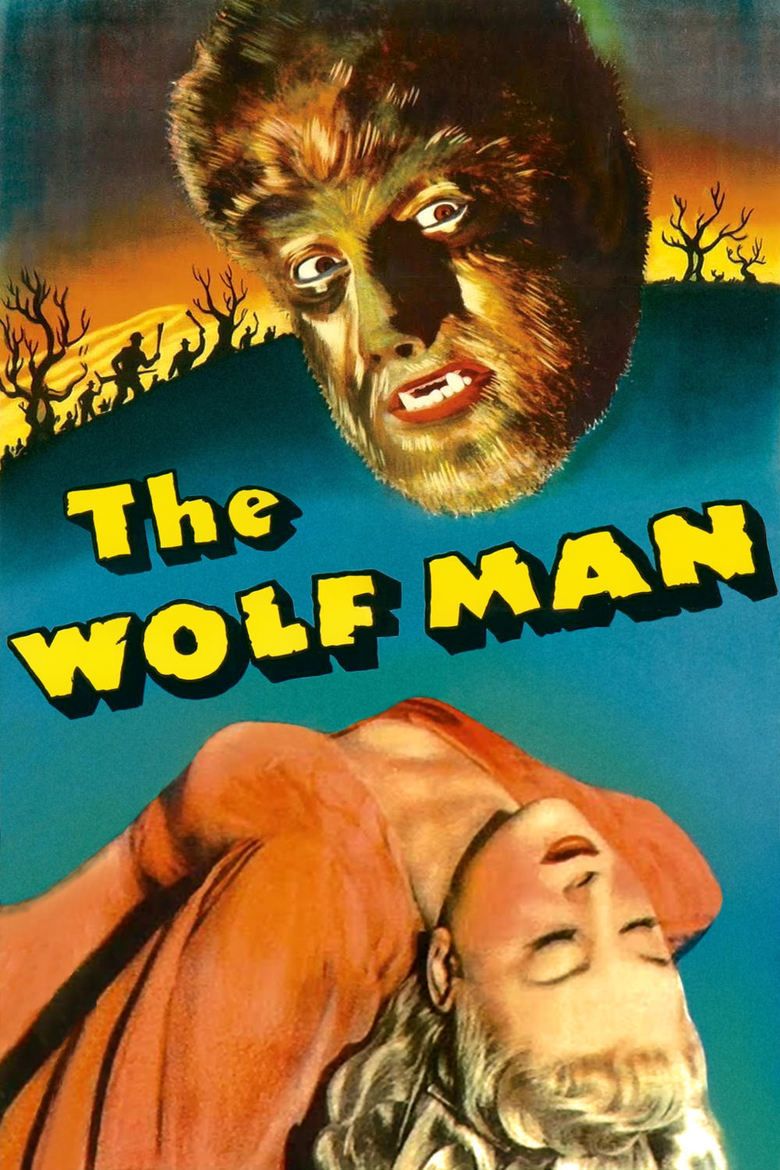 | ||||||||||||||||||||||||||||||||||
Release date December 12, 1941 (1941-12-12) Film series Universal horror Film Series Cast Lon Chaney Jr. (The Wolf Man / Larry Talbot), (Sir John Talbot), (Dr. Lloyd), (Bela), (Col. Montford), (Frank Andrews)Similar movies Princess Mononoke , Never Cry Werewolf , The Beast , The Curse of the Werewolf , , Sieben Monde Tagline "His hideous howl a dirge of death!" | ||||||||||||||||||||||||||||||||||
The wolf man official trailer 1 bela lugosi movie 1941 hd
The Wolf Man is a 1941 American horror film written by Curt Siodmak and produced and directed by George Waggner. The film stars Lon Chaney, Jr. in the title role, and features Claude Rains, Evelyn Ankers, Ralph Bellamy, Patric Knowles, Béla Lugosi, and Maria Ouspenskaya in supporting roles. The title character has had a great deal of influence on Hollywood's depictions of the legend of the werewolf. The film is the second Universal Pictures werewolf film, preceded six years earlier by the less commercially successful Werewolf of London (1935).
Contents
- The wolf man official trailer 1 bela lugosi movie 1941 hd
- The wolf man 1941 first kill scene 5 10 movieclips
- Plot
- Production
- Special effects
- Home media
- Legacy
- Sequels
- Remake
- Reboot and shared universe
- References
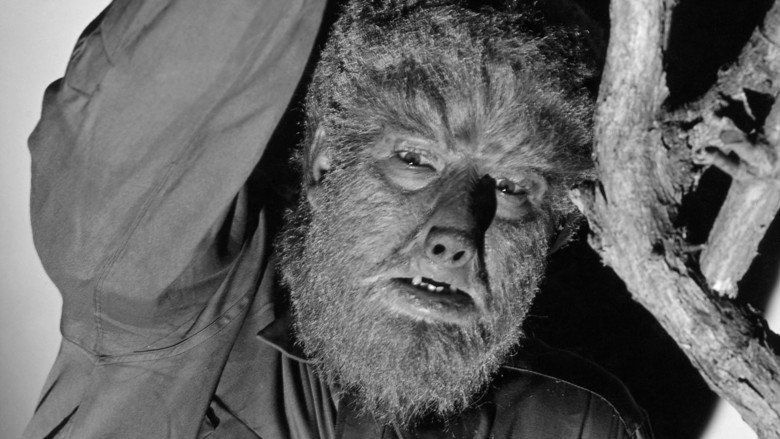
Lon Chaney, Jr. would reprise his classic role as "The Wolf Man" in four sequels, beginning with Frankenstein Meets the Wolf Man in 1943.

The wolf man 1941 first kill scene 5 10 movieclips
Plot

Sometime in the early twentieth century, after learning of the death of his brother, Larry Talbot (Lon Chaney Jr.) returns to his ancestral home in Llanwelly, Wales to reconcile with his estranged father, Sir John Talbot (Claude Rains). While there, Larry becomes romantically interested in a local girl named Gwen Conliffe (Evelyn Ankers), who runs an antique shop. As a pretext to converse with her, he purchases a silver-headed walking stick decorated with a wolf. Gwen tells him that it represents a werewolf (which she defines as a man who changes into a wolf "at certain times of the year.")
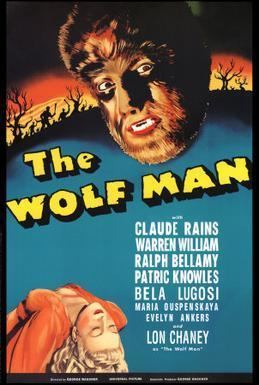
Throughout the film, various villagers recite a poem, whenever the subject of werewolves comes up:
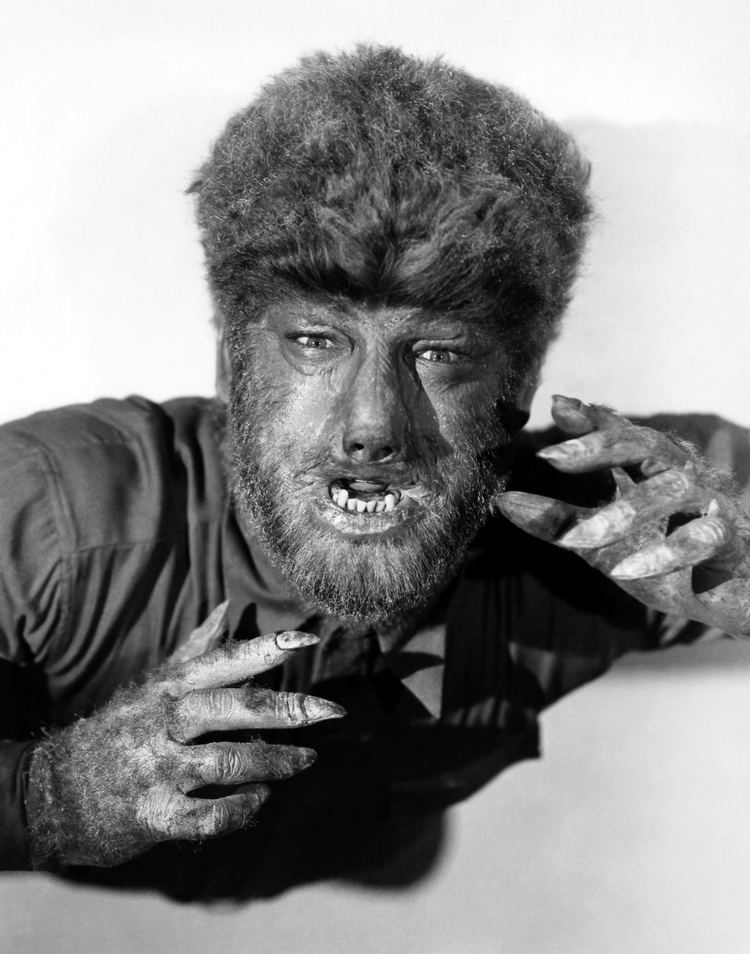
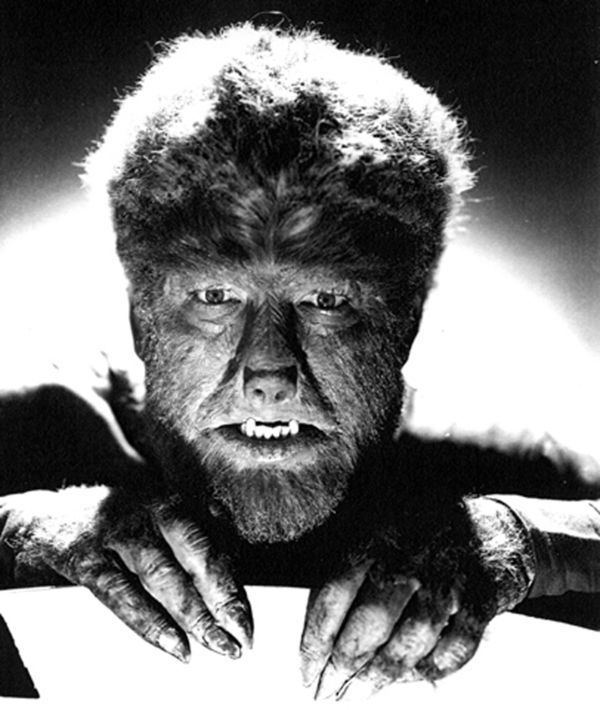
That night, Larry attempts to rescue Gwen's friend Jenny from what he believes to be a sudden wolf attack. He kills the beast with his new walking stick, but is bitten on the chest in the process. A gypsy fortuneteller named Maleva (Maria Ouspenskaya) reveals to Larry that the animal which bit him was actually her son Bela (Bela Lugosi) in the form of a wolf. She also reveals that Larry will transform into a wolf as well since he who is bitten by a werewolf and lives will turn into one himself.

Talbot transforms into a wolf-like creature and stalks the village, first killing the local gravedigger. Talbot retains vague memories of being a werewolf and wanting to kill, and continually struggles to overcome his condition. He is finally bludgeoned to death by his father with his own silver walking stick after attacking Gwen. Sir John Talbot watches in horror as the dead werewolf transforms into his son's human form. Gwen notices as well & cries for her friend's condition as the local police arrive on the scene.
Production

The poem, contrary to popular belief, was not an ancient legend, but was in fact an invention of screenwriter Siodmak. The poem is repeated in every subsequent film in which Talbot/The Wolf Man appears, with the exception of House of Dracula and Abbott and Costello Meet Frankenstein, and is also quoted in the later film Van Helsing, although many later films change the last line of the poem to "And the moon is full and bright". In episode 944 of Dark Shadows, Christopher Pennock (as Jeb Hawkes) recites this version of the poem.
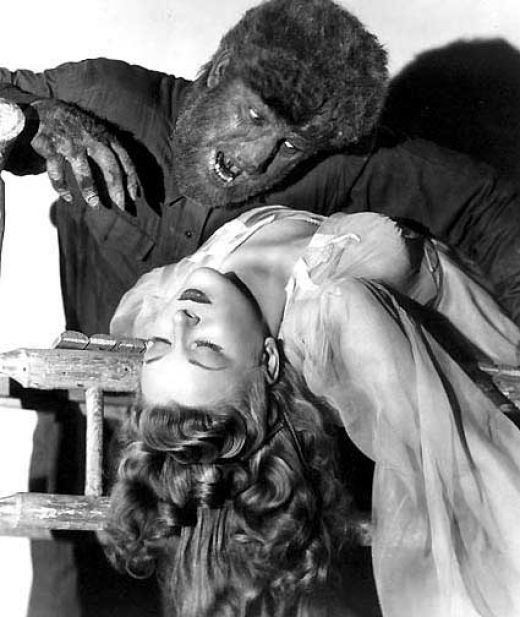
The original Wolf Man film does not make use of the idea that a werewolf is transformed under a full moon. Gwen's description and the poem imply that it happens when the wolfbane blooms in autumn. The first sequel, though, made explicit use of the full moon both visually and in the dialog, and also changed the poem to specify when the moon is full and bright. Presumably this is what popularized the full-moon connection in the 20th century. The sequel visually implies that the transformation occurs as a result of direct exposure to light from the full moon. Other fiction has assumed the transformation is an inescapable monthly occurrence and does not examine whether it is caused by light, tidal effects, or some cycle that happens to coincide with the moon's phases.
Special effects
In the original film, Chaney did not undergo an on-screen transformation from man to wolf, as featured in all sequels. The lap-dissolve progressive make-ups were seen only in the final ten minutes, and then discreetly: Talbot removes his shoes and socks, and it is his feet which are seen to grow hairy and transform into huge paws (courtesy of uncomfortable "boots" made of hard rubber, covered in yak hair). In the final scene, the werewolf does gradually become Larry Talbot through the standard technique.
Stories about the make-up and transformation scenes have become legendary, and are mostly apocryphal. The transformation of Chaney from man into monster was laborious. The series of makeups took five to six hours to apply, and an hour to remove. Jack Pierce had originally designed it for Henry Hull in Werewolf of London (1935) but Hull argued that the disguise made no sense within the plot, since two characters had to recognize "Dr. Glendon" even in his werewolf form. Pierce was ordered to design a second version which left more of Hull's face recognizable. Pierce then recycled his design for the 1941 film.
Chaney claimed he was forced to sit motionless for hours as the scenes were shot frame by frame. At times he claimed he was to remain sitting even while the crew broke for lunch and was not even allowed to use the bathroom. Chaney even went as far as saying special effects men drove tiny finishing nails into the skin on the sides of his hands so they would remain motionless during close ups. However, there may be some exaggeration involved - studio logs indicate during the filming of Abbott and Costello Meet Frankenstein (1948) the entire crew, including Chaney took a two-hour break during the filming of a transformation and filmed the rest of the scene later that day (though the makeup for Abbott and Costello Meet Frankenstein had been greatly redesigned and streamlined by Bud Westmore over the original Jack Pierce makeup). What really happened was a plaster mold was made to hold his head absolutely still as his image was photographed and his outline drawn on panes of glass in front of the camera. Chaney then went to makeup man Jack Pierce's department, where Pierce, using grease paint, a rubber snout appliance and a series of wigs, glued layers of yak hair to Chaney's face. Then Chaney would return to the set, line himself up using the panes of glass as reference and several feet of film were shot. Then Chaney would return to the make-up department, a new layer was applied, showing the transformation further along, then returned to the sound stage. This was done about a half-dozen times. Talbot’s lap dissolve transformation on screen only took seconds, while Chaney’s took almost ten hours.
Home media
On April 27, 2004, Universal released The Wolf Man on DVD as part of the Universal Legacy Collection. This two disc edition included four films:
The DVD collection also included the following bonus features:
The film was released on Blu-ray Disc in 2012 as part of the Universal Classic Monsters Collection, alongside many other classic Universal horror films (including Frankenstein, the Mummy, and the Invisible Man).
Legacy
The Wolf Man is the only Universal monster to be played by the same actor in all his 1940s film appearances. Lon Chaney, Jr. was very proud of this, frequently stating in interviews, "He was my baby." Chaney would go on to play a wolf man (if not the Wolf Man) in very similar makeup in the 1959 Mexican film La Casa del Terror and a famous 1962 episode of TV's Route 66 titled Lizard's Leg and Owlet's Wing, which also starred Boris Karloff as the Frankenstein Monster. Nearly a decade later, even though he was seriously ill at the time, Chaney managed to conjure up his original energetic gestures while masked in a quasi-wolfish rubber mask for one scene in his last film, 1971's Dracula vs. Frankenstein.
The Wolf Man was not Universal's first werewolf film. It was preceded by Werewolf of London from 1935, starring noted character actor Henry Hull in a quite different and more subtle werewolf makeup. As noted previously, Hull objected to having his face entirely covered in latex and hair, and a less-hirsute, more devilish version was used in the film. The film was not a huge box office success, probably because audiences of the day thought it too similar in many ways to Dr. Jekyll and Mr. Hyde, for which Fredric March had won an Oscar three years before. Some latter-day critics prefer Henry Hull's earlier werewolf to Chaney's, which was described in Carlos Clarens's book An Illustrated History of the Horror FIlm as "... looking like a hirsute Cossack."
The Wolf Man is one of three top-tier Universal Studios monsters without a direct literary source. The others are The Mummy and the Creature from the Black Lagoon. In the 1970s, novelizations of the original films were issued as paperback originals as part of a series written by "Carl Dreadstone," a house name pseudonym for a several writers, including British horror writer Ramsey Campbell.
Fantasy/horror author Neil Gaiman uses the "Larry Talbot" character in two selections from his short story collection Smoke and Mirrors.
Harlan Ellison's Hugo Award-winning story "Adrift just off the Islets of Langerhans, latitude 38 degrees, 54' N., longitude 77 degrees, 00' 13' W" uses "Laurence Talbot" as the main character.
Heavy metal band Iced Earth's track "Wolf" from the album Horror Show, has the wolfsbane poem recited in its main chorus with some added words in between. Similarly, the track "Howl" by Florence + The Machine (from the album Lungs) features a slightly edited version of the poem in the closing verse. Cradle of Filth used the poem as the intro to their track entitled "Queen of Winter, Throned" on the album V Empire. The character of Jon Talbain, a werewolf attempting to overcome his curse in the Darkstalkers game series, bears a resemblance to the character of Larry Talbot in name and in characterization, made doubly so by the fact that the series primary characters are all homages to horror movie archetypes. Note also the name's similarity to Sir Jon Talbot; Talbain is English by heritage.
The Wolf Man also influenced future filmmakers as well. Cult films such as An American Werewolf in London and The Howling drew inspiration from The Wolf Man and made references to the film as well.
In the 1975 Spanish horror film La maldición de la bestia, written by and starring Paul Naschy, one of the characters is called Larry Talbot.
The film is referenced in the comic book Screamland, where these films are pseudo-fictional in that the Wolf Man is a real person acting in a film of a similar name.
In the Friday the 13th: The Series episode "Scarlet Cinema", A film student wo's a fan of the film uses a cursed movie camera to bring the beast to life.
Sequels
The Wolf Man proved popular, and so Chaney reprised his signature role in four more Universal films, though unlike his contemporary "monsters," Larry Talbot never enjoyed the chance to have a sequel all to himself. Frankenstein Meets the Wolf Man (1943) had Talbot’s grave opened on a full moon night, causing him to rise again (making him, in the subsequent films, technically one of the undead). The full moon, which had not been shown or mentioned in the first film, was used as a quasi-explanation for the monster's resurrection, and the poem known to the local villagers was retconned to mention the full moon, so that the last line became
and the moon is full and bright.The resurrected Talbot seeks out Dr. Frankenstein for a cure, but finds the monster (Béla Lugosi) instead. The two square off at the climax, but the fight ends in a draw when a dam is exploded and Frankenstein’s castle is flooded. In House of Frankenstein (1944), Talbot is once again resurrected and is promised a cure via a brain transplant, but is shot dead with a silver bullet instead. He returns with no explanation in House of Dracula (1945), and is finally cured of his condition. But he was afflicted once again, in the comedy film Abbott and Costello Meet Frankenstein (1948). This time the Wolf Man is a hero of sorts, saving Wilbur Grey (Lou Costello) from having his brain transplanted by Dracula (Bela Lugosi) into the head of the Monster (Glenn Strange). Grabbing the vampire as he turns into a bat, the Wolf Man dives over a balcony into the sea, taking Dracula with him.
Remake
Universal Pictures produced a remake of The Wolf Man with Joe Johnston directing the film and Benicio del Toro starring as Lawrence Talbot (also producer of the film). The remake followed the same basic plot of the original but the story and characters were significantly altered, with Anthony Hopkins in a radically altered version of the Claude Rains role. The film was released on February 12, 2010 and opened at #2 at the box office that weekend. The film was met with mixed reviews and a low box office reception but won an Academy Award for Best Makeup in 2011.
Due to the 2010 remake performing below expectations at the box office, Universal chose not to produce a sequel. Universal's 2012 film Werewolf: The Beast Among Us was originally planned as a spin-off from The Wolfman but was ultimately unrelated.
Reboot and shared universe
Universal announced that it would reboot their Universal Monsters properties as part of a shared cinematic universe, with Alex Kurtzman and Chris Morgan attached to develop the structure of the shared universe. In November 2014, Universal hired Aaron Guzikowski to write the shared universe's reboot of The Wolf Man. In June 2016, Deadline reports that Dwayne Johnson may star as the character. In October 2016, it was reported that David Callaham was brought on board to re-write the script. The release date is set for March 30, 2018.
References
The Wolf Man (1941 film) WikipediaThe Wolf Man (1941 film) IMDbThe Wolf Man (1941 film) Rotten TomatoesThe Wolf Man (1941 film) themoviedb.org
